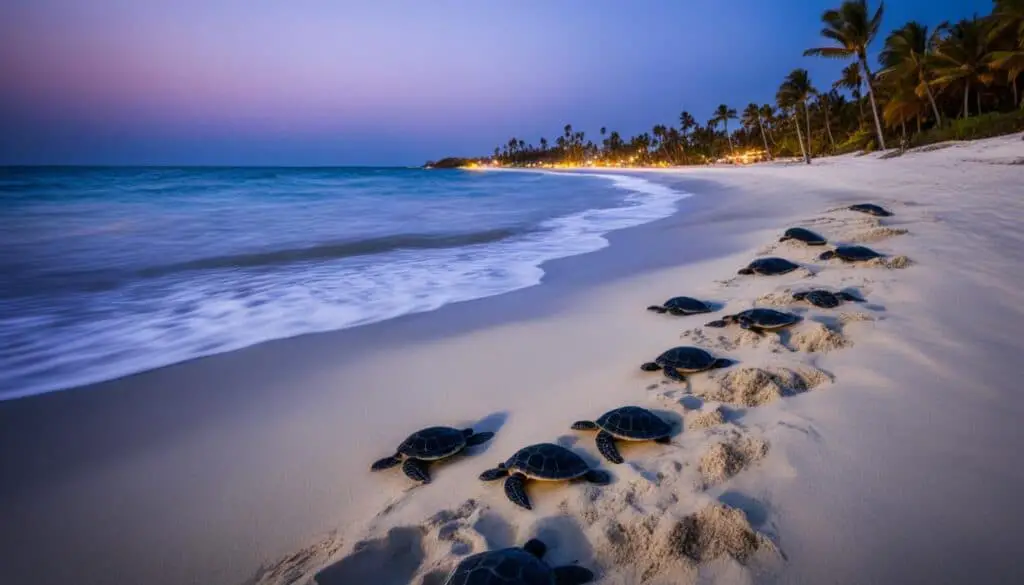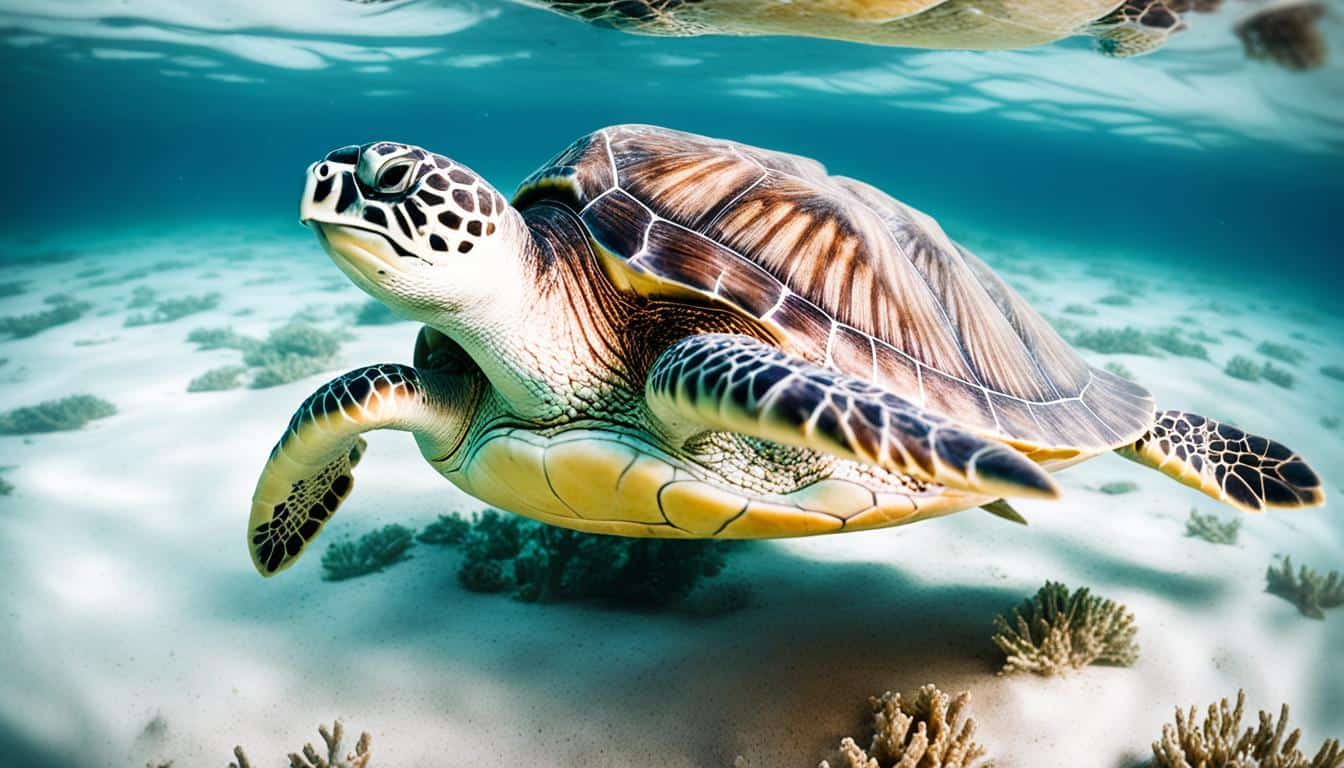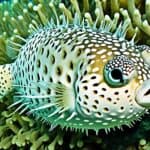Sea turtles are fascinating creatures that live in our oceans. Each species has its own unique traits and behaviors, especially when it comes to making more turtles. Learning about how sea turtles reproduce is not just interesting, but it’s also crucial for saving their populations worldwide.
By looking into how sea turtles mate and using DNA tests, scientists can learn a lot. This knowledge helps them work on saving endangered species. We will explore some key facts about sea turtle reproduction. These facts show how important these amazing reptiles are for the health of our oceans.
The Importance of Understanding Sea Turtle Reproduction
Learning about sea turtle reproduction helps us save their populations. It tells us how to protect them better. By understanding their breeding habits, we can help them more.
You can make a big difference by learning about their reproduction. Knowing their challenges helps us protect them.
Conservation Efforts and Sea Turtle Populations
Conservation efforts protect their nesting sites and reduce human impact. By watching their breeding and nesting, we can make better plans to save them. This helps increase their survival chances.
Collecting accurate data is key. It helps scientists find and check on breeding populations. For example, studying nesting females shows us what they need to survive.
Impact of Reproductive Success on Species Recovery
Reproductive success is crucial for species recovery. When more young turtles are born, their populations grow. This helps them stay strong in their environments.
Conservationists work to make breeding conditions better. This helps sea turtles live longer and healthier lives. Every successful breeding season gives us hope for their future.
How do sea turtles reproduce?
Learning about sea turtle reproduction is key for their survival. Male and female sea turtles have complex ways of breeding. Each type of sea turtle has its own way of reproducing, based on its environment and evolution.
Male and Female Sea Turtle Breeding Patterns
Male sea turtles live mostly in the ocean. Females come to land to nest. When they’re ready to mate, males show special behaviors to attract females. A female might mate with several males, making the genetic mix rich.
Studies show that up to three males can fertilize a single nest. This shows how complex sea turtle reproduction is.
Reproductive Strategies in Different Sea Turtle Species
Sea turtles have different ways of reproducing based on where they live and the challenges they face. Some breed in certain places to increase their chances of success. Others travel long distances for mating. These methods help their eggs survive and keep their species going.
Sea Turtle Mating Behavior
Sea turtle mating behavior is quite complex and interesting. Males show off in unique ways to attract females. These displays can include biting and swimming together closely.
Observation of Courtship Rituals
Scientists study courtship rituals to understand mating habits. Males often signal they’re ready to mate by moving in certain ways. These actions can be:
- Approaching with slow swimming patterns
- Gentle nudges or bites during encounters
- Visual displays such as flippers extended or specific swimming postures
These behaviors help increase the chances of mating and show how fit the males are. By watching these rituals, scientists learn how these actions help sea turtles reproduce better.
Role of Environmental Factors in Mating
Environmental factors greatly affect sea turtle mating. Things like water temperature and beach conditions matter a lot. For example, the temperature of the nesting beach can decide if hatchlings are male or female.
This affects the future of the sea turtle population. Knowing how climate change changes these conditions is important for sea turtles.
Researchers are looking into how the environment affects mating. They want to know how changes in habitat might change mating habits. This could help make better conservation plans and policies.
Sea Turtle Nesting Habits
Learning about sea turtle nesting habits is key to their survival and success. Female sea turtles pick their nesting spots carefully. They look for the right sand, temperature, and safety from predators. Choosing well can greatly affect their nesting success.
Choosing the Right Nesting Sites
When picking a nesting site, sea turtles consider many things. They look for:
- Fine sand for easy digging.
- Places with little human activity.
- Best temperatures for egg incubation.
Challenges Faced During Nesting
Even with their natural skills, sea turtles face many challenges. Habitat loss from human development is a big issue. Things like beach trash and artificial lights can keep females from nesting or confuse them. Climate change also poses a threat, with rising sea levels and changing conditions.
Monitoring Nesting Success Rates
It’s important to watch how well conservation works. Researchers use different methods to check nesting success. These include:
- Tagging nesting females to track their actions.
- Surveying nesting sites to see conditions.
- Looking at hatchling success and how they leave the nest.

Sea Turtle Egg Laying Process
The sea turtle egg laying process is key to their survival. It involves important steps that affect their ability to reproduce and sustain their numbers. Knowing about this helps us protect these amazing creatures.
Steps in the Egg Laying Process
A female sea turtle goes through these steps when laying eggs:
- Nesting Site Selection: She picks a spot on the beach, often remembering places from before.
- Burrowing: She digs a hole with her flippers in the chosen spot.
- Egg Deposition: She lays her eggs in the hole, which can be 50 to 200.
- Covering Eggs: She covers the nest with sand to keep predators away.
- Returning to Sea: Finally, she goes back to the ocean, leaving her eggs to hatch.
Factors Influencing Egg Deposition
Many things can affect how successful the egg laying is:
- Female Health: A healthy female is more likely to lay viable eggs.
- Environmental Conditions: Things like temperature, humidity, and beach conditions matter a lot.
- Nesting Timing: When in the season affects where and how eggs are laid.
Natural Predators and Threats to Eggs
Many dangers threaten sea turtle eggs. Natural predators include:
- Birds
- Crabs
- Foxes and raccoons
Human actions like building near the coast, pollution, and climate change also harm the eggs. We must work to protect these eggs to help more hatchlings survive.
Marine Turtle Reproduction Facts
Learning about marine turtle reproduction is key to understanding their breeding and population growth. Sea turtles take 20 to 50 years to become ready to reproduce, depending on the type. This shows how crucial it is to protect them early on.
Environmental factors also play a big role in the sex of sea turtle hatchlings. The temperature of the sand where eggs are laid can decide if a hatchling is male or female. Warmer temperatures often mean more females. Climate change could disrupt this balance, affecting sea turtle populations.
These facts about marine turtle reproduction help us understand their complex life cycle. They highlight the importance of sea turtles in the ocean and the need to protect their homes. This knowledge is crucial for their survival.
FAQ
How do sea turtles reproduce?
Sea turtles mate in the ocean. Then, females go to coastal areas to lay eggs. They pick safe spots based on the sand and protection from predators.
What are the nesting habits of sea turtles?
Female sea turtles come back to the same beaches to nest. They lay about 50-150 eggs at a time. They may nest many times in a season.
How do environmental factors impact sea turtle reproduction?
Things like water temperature and beach conditions affect sea turtle mating and hatchling sex. Warmer nests usually have more female hatchlings.
Why is sea turtle reproductive success important for conservation?
Success in reproduction helps sea turtle populations grow. More young turtles mean a healthier population and ecosystem.
What challenges do sea turtles face during nesting?
Sea turtles face threats like habitat loss, human disturbance, and climate change. These issues can lower the chances of successful nests and harm eggs and hatchlings.
How do scientists study sea turtle reproduction?
Scientists use DNA tests and satellite tracking to study sea turtles. This helps them understand genetics and reproductive health.
What is the significance of monitoring nesting success rates?
Watching nesting success helps scientists check if conservation plans work. This info is key for managing breeding populations and making smart decisions.
How do male and female sea turtles differ during the reproductive cycle?
Males stay in the ocean, while females come ashore to nest. Mating is quick, and females may mate with several males. This adds genetic variety to their eggs.







